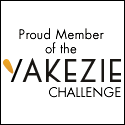 In a perfect world, investments would constantly go up at a predictable and measurable rate, unaffected by variables or unwanted outside influences. Unfortunately, though, the world is far from perfect and the actual volatility of a financial asset or investment is subject to a myriad of influences. Some are welcome, some not so, but one thing is certain, over time the value of an investment such as a piece of jewellery or a fine work of art will change. This in turn will have a direct bearing on the type of insurance you will need to take out to protect that asset – and how much it will cost you.
In a perfect world, investments would constantly go up at a predictable and measurable rate, unaffected by variables or unwanted outside influences. Unfortunately, though, the world is far from perfect and the actual volatility of a financial asset or investment is subject to a myriad of influences. Some are welcome, some not so, but one thing is certain, over time the value of an investment such as a piece of jewellery or a fine work of art will change. This in turn will have a direct bearing on the type of insurance you will need to take out to protect that asset – and how much it will cost you.
Educating clients about risk
For insurance brokers, there is now more of a need to educate clients about the risks involved in protecting their assets. Charles Hamilton-Stubber of Aon Private Clients sums it up: “Investment volatility has meant families are placing more emphasis on protecting their tangible assets. In turn, the role of the insurance broker has become key to insulating wealth by educating and boosting understanding on tackling risks. As confidence has been lost in some elements of the financial services, insurance brokers are in a strong position to respond and offer effective advice on protecting wealth.”
What this translates as is that as we lose faith in perhaps what were seen as greater risk/return options before the financial crisis hit, the shift is more towards what are regarded as more ‘stable’ investments, such as fine art. For those who manage larger private insurance programmes (such as those with annual premiums in excess of £40,000 [or $66,000]), one of the best ways to risk assess is through the use of a ‘risk audit’.
Risk audits
Risk audits are a process of reviewing expenditure on insurance (which includes tangible assets such as property or fine art, liabilities and personal wellbeing), cross referencing them with their current insurance portfolio to find out if the existing arrangements are adequate and then finally offering practical solutions and advice in how to maximise coverage whilst minimising risk.
In recent years, the size and complexity of insurable assets amongst wealthier clients has changed. However, there may still be a disparity between the level of cover provided by existing insurance and the true worth of the assets. In addition, the increased risk to a client’s wellbeing (particularly if they travel extensively in what can be regarded as ‘high risk’ areas) could mean that their existing insurance is insufficient.
So it is up to the broker to ensure that their client is kept fully informed of the potential for their insurance to struggle to keep up with the volatility in value of an investment. It also needs to be pointed out to the client that there may be gaps or even overlaps in coverage, especially if policies have been taken out with different insurers. In this instance, the client could end up paying far more in premiums than they need to.
It’s also key to read the small print. While this may seem like generic advice, in some cases the wording of a policy may be outdated or even inappropriate for the risk being insured. Clarity is key, and so the overlying advice has to be to check those policies on a regular basis, especially if circumstances change, to ensure that they are current, offer the best coverage and that the client is actually getting what they’re paying for.












Recent Comments